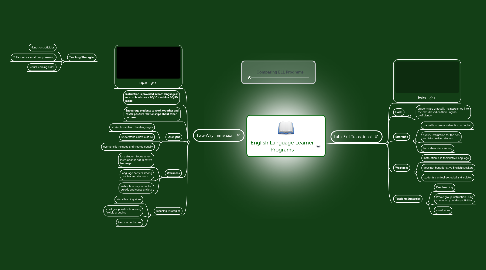
1. Two-Way Immersion
1.1. Topics
1.2. Instruction is provided in both languages; most schools use a 90/10 model or 50/50 model
1.3. Encourage students to work together and foster positive relationships about other cultures
1.4. Strengths
1.4.1. students can learn two languages
1.4.2. understand a new culture
1.4.3. everyone is included and treated equally
1.5. Weakness
1.5.1. lose student focus when instruction is not in native language
1.5.2. language barriers among teacher and students
1.5.3. instruction may move to quickly and cause anxiety
1.6. Teaching Strategies
1.6.1. visual learning aides
1.6.2. small group instruction using flexible grouping
1.6.3. hands on activities
2. Teaching Strategies
2.1. Hands on activities
2.2. Collaborative small group learning
2.3. Visual learning aides
3. Comparing ELL Programs
3.1. Use this map as a one year overview of your subject's curriculum.
3.2. Note the topics you want to cover and the educational goals of each semester
3.3. Add exam dates and materials
3.4. Add dates and links to excursions and projects you are planning
3.5. You can share this map with your students to provide them with an overview of the class
3.6. Link the topic overview with a second mind map, where you give a more detailed outline of the contents. You can then turn that map into a presentation to visually aid your lectures
4. Late-Exit Transitional
4.1. Topics
4.2. Goals
4.2.1. students are gradually mainstreamed into the class based on their English proficiency
4.3. Strengths
4.3.1. gradually increase instruction in English
4.3.2. quality instruction for the non english speaking student
4.3.3. facilitate understanding
4.4. Weakness
4.4.1. instruction is in their native language
4.4.2. does not benefit native English speakers
4.4.3. students can feel excluded and isolated
4.5. Teaching Strategies
4.5.1. Peer teaching
4.5.2. Whole group instruction using community building activities
4.5.3. visual aides
